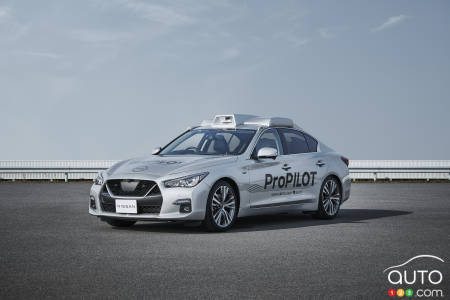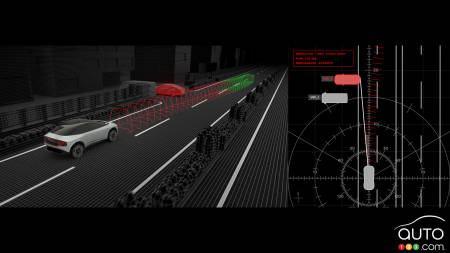Modern vehicles are safer than ever, thanks in part to devices that help us avoid collisions. From lane departure warning to automatic emergency braking systems, we're safer than ever.
But not all collisions can be avoided, as the scenarios on the road are limitless. However, with the advancement of technology, it is possible to develop approaches that will make vehicles even more effective at avoiding impacts.
On Sunday night, Nissan presented a video showing how these new approaches could work. What we were shown is still in development, but it was interesting to see that the technologies have increased capabilities.
Basically, the new systems adopt next-generation lidar sensing to create a very accurate picture of the vehicle's environment in real time, and in three dimensions. This means that the vehicle you are in is truly aware of its immediate surroundings, much more so than you are with your limited view from the driver's seat.
Along with its real-time peripheral vision, the system is capable of taking concrete actions to avoid collisions, actions that are much more powerful than those our current vehicles are capable of.
Browse cars for sale available near you
In the shared video, we can see a Nissan Skyline (Infiniti Q50 in our country) test model equipped with a lidar, as well as radar sensors and cameras. The information from those sensors is merged to create a view of the environment in a process Nissan calls “Ground Truth Perception”.
From this information, we can see that the car is able to judge a more complex situation on the road, such as performing more than one evasive manoeuvre depending on what is occurring in front of it. It also shows itself capable of automatically performing high-speed avoidance operations, including changing lanes if necessary. It can do this is because it detects dangers on the road with greater precision, clarity and speed.
Nissan sees this as a key step towards fully autonomous vehicles. While the basis of autonomy means a vehicle getting itself from point A to point B, the vehicle also needs to be able to get there without mishap. The technologies under development will go a long way toward that.
“We are confident that our in-development Ground Truth Perception technology will make a significant contribution to owner confidence, reduced traffic accidents and autonomous driving in the future.”
- Takao Asami, Nissan's head of global research and development

The Japanese automaker relies on lidar technology from U.S.-based Luminar for its Ground Truth Perception system. Other companies working with Luminar include Daimler Trucks, Mercedes-Benz and Volvo.
Nissan said it expects to complete development of its Ground Truth Perception technology by the middle of the decade, with the first use in models coming soon after that. By 2030, it should be available with all of the brand's new models.




